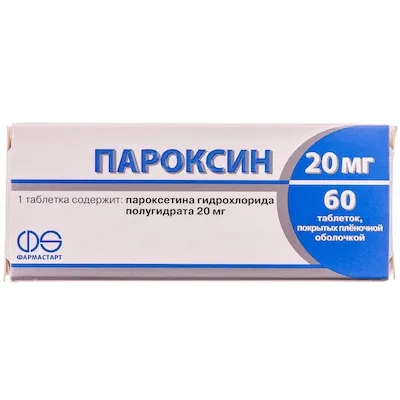Description
Paroxin (Paroxetine Hydrochloride) Coated Tablets 20 mg. №60
Ingredients:
- Each coated tablet contains 20 mg of paroxetine hydrochloride as the active ingredient.
Dosage:
- The usual recommended dose is one 20 mg tablet daily, with or without food.
Indications:
- Paroxin tablets are indicated for the treatment of depression, obsessive-compulsive disorder (OCD), panic disorder, social anxiety disorder, generalized anxiety disorder, and post-traumatic stress disorder (PTSD).
Contraindications:
- Do not use Paroxin tablets if you are allergic to paroxetine or any other ingredients in the formulation. It is contraindicated in patients taking monoamine oxidase inhibitors (MAOIs).
Directions:
- Swallow the tablet whole with water. Do not crush or chew the tablet. Follow the instructions of your healthcare provider for the best results.
Scientific Evidence:
- Paroxetine, the active ingredient in Paroxin tablets, is a selective serotonin reuptake inhibitor (SSRI) that works by increasing the levels of serotonin in the brain. This mechanism helps in alleviating symptoms of depression and anxiety disorders.
- Several clinical trials have demonstrated the efficacy of paroxetine in the treatment of various mood and anxiety disorders. A study published in the Journal of Clinical Psychiatry showed that paroxetine was effective in reducing symptoms of OCD compared to a placebo.
Additional Information:
- It is important to inform your healthcare provider about all medications, supplements, and medical conditions before starting Paroxin tablets to avoid potential drug interactions or adverse effects.
- Contact your doctor immediately if you experience any unusual or severe side effects while taking Paroxin tablets.





